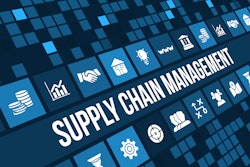
In today’s volatile retail and logistics environment, data is the lifeblood of supply chain visibility. Every decision, whether it’s related to purchasing, distribution, returns, or customer experience, depends on the quality and accessibility of information. The question every organization should be asking is: Are we leveraging our data to be proactive or reactive?
The power of data visibility
Modern supply chains generate volumes of data, coming from a wide variety of data sources such as real-time and historical sales, product launches, seasonal surges, and unexpected events like tariffs, political changes, inflation, or natural disasters.
The challenge may stem from one or several contributing factors. Sometimes it is data scarcity. This manifests itself on the returns side or with sellers. The data is incomplete or not captured far enough up in the supply chain. Oftentimes data is siloed into specific departments within a company. Return reasons may not always be captured accurately. Without using prior data for predictiveness, lousy history can be doomed to repeat itself.
During periods of peak activity, this lack of visibility can be especially damaging. After major retail events like Black Friday or Prime Day, returns typically spike up to 30%. Without proper planning, this can overwhelm supply chains who don't have the capacity or labor to keep up.
Why flexible data is crucial
To transition from reactive to proactive, companies need a centralized and flexible data infrastructure. This type of system should break down silos so that return data, inventory reports, sales performance, and vendor policies are all accessible in one place. Having dashboards that are readily available, and easily usable for all parts of the business, as well as skill level of the associate, is extremely important. In 2025, there are many tools to make the data accessible and digestible.
At the heart of a modern supply chain is a centralized, data-driven dashboard, one that doesn’t just report what happened yesterday but also signals what’s about to happen next. When this dashboard pulls together information from across the business, it gives teams the power to see problems before they get out of control.
The result is supply chain visibility that predicts and prepares for change rather than viewing activity as it unfolds. Consider holiday spikes when return volumes can skyrocket as much as 30%. With historical data alone, teams are playing catch-up, but when paired with live sales and return feeds, teams can predict which products are likely to flood the returns pipeline and plan accordingly.
An example of this can be found on the returns side of the business. A new product is rolled out, and there is feedback in the market from consumers that there is a malfunction. This should cause an immediate investigation into the forward sales and tracking of returns percentages. With new product launches this is especially important.
Data integrity: Is your data honest?
Centralizing data is just the first step in the process. Returns accuracy and honesty are equally important. One area where many companies struggle is with return reasons. Often, customers are unintentionally encouraged to give inaccurate reasons for returning items. For instance, if a shopper selects “defective product,” they may qualify for free shipping, while selecting “wrong size” might come with a restocking fee. Naturally, this pushes customers toward whichever option is most convenient or cost-effective, even if it’s not accurate.
When these skewed return reasons are aggregated, they create false signals. Vendors may be blamed for quality issues that don’t exist. Product teams might make changes based on incorrect assumptions. Forecasting models become unreliable, throwing off planning and budgeting.
To solve this, companies need fair, transparent return policies that reward honesty. Simplifying the return process and making it easy for customers to give accurate information is key. Equally important, warehouse and returns staff must verify return reasons during product check-in. When customer input is combined with operational confirmation, companies achieve true data integrity, which is essential for proactive decision-making.
Pushing data upstream
Accurate returns data doesn’t just improve internal planning; it creates a powerful feedback loop for vendors and suppliers. Imagine multiple returns for the same product citing “incorrect dimension.” With a strong returns data system, this information flows upstream immediately. Vendors can correct the issue at the source by updating packaging, adjusting manufacturing specifications, or improving quality control. Without this feedback loop, vendors are left in the dark, and companies continue to deal with recurring issues, reactively processing the same problems over and over.
Whether a retailer manages their returns internally or through a third-party partner, they need to ask themselves a pivotal question: Is data and inventory integrity the most important part of their returns platform? Here, the goal is to improve upstream performance, not just to process downstream returns efficiently. This requires clean, verified, and actionable data.
Returns management - Data strategy
The real challenge today isn’t whether returns are part of your data strategy, it’s how effectively that data is being used to drive visibility and reduce risk. While some organizations handle returns internally and others leverage a returns management platform or partner, the focus should always remain on data quality and inventory accuracy. The returns process isn’t just about moving goods back through the supply chain, it’s about uncovering critical insights that improve operations and strengthen decision-making.
Returns data reveals patterns of recurring issues before they spread, provides a deeper understanding of true product performance and customer behavior, and ensures inventory records reflect reality. When integrated effectively, it becomes a vital layer of visibility, turning raw data into an early warning system, alerting teams to problems before they escalate. This proactive approach strengthens decision-making and drives continuous improvement throughout the supply chain.
Driving future success
True supply chain visibility goes beyond knowing what is happening today. It’s about predicting what will happen next and being ready to act before it affects the business. To get there, companies must ensure their data is accessible, flexible, and honest. Accessible data allows decision-makers to see the full picture in real-time. Flexible data systems adapt to changing markets, product lines, and customer needs. Honest data accurately captures the true story of returns and product performance, giving companies confidence in the actions they take.
The simple but powerful question every organization should ask is: Am I proactive or reactive?
Answering that question forces teams to examine whether their current processes are building long-term resilience or trapping them in a constant cycle of last-minute fixes. With accurate, connected data, supply chain visibility shifts from a passive reporting function to an actionable tool for growth and agility.



















